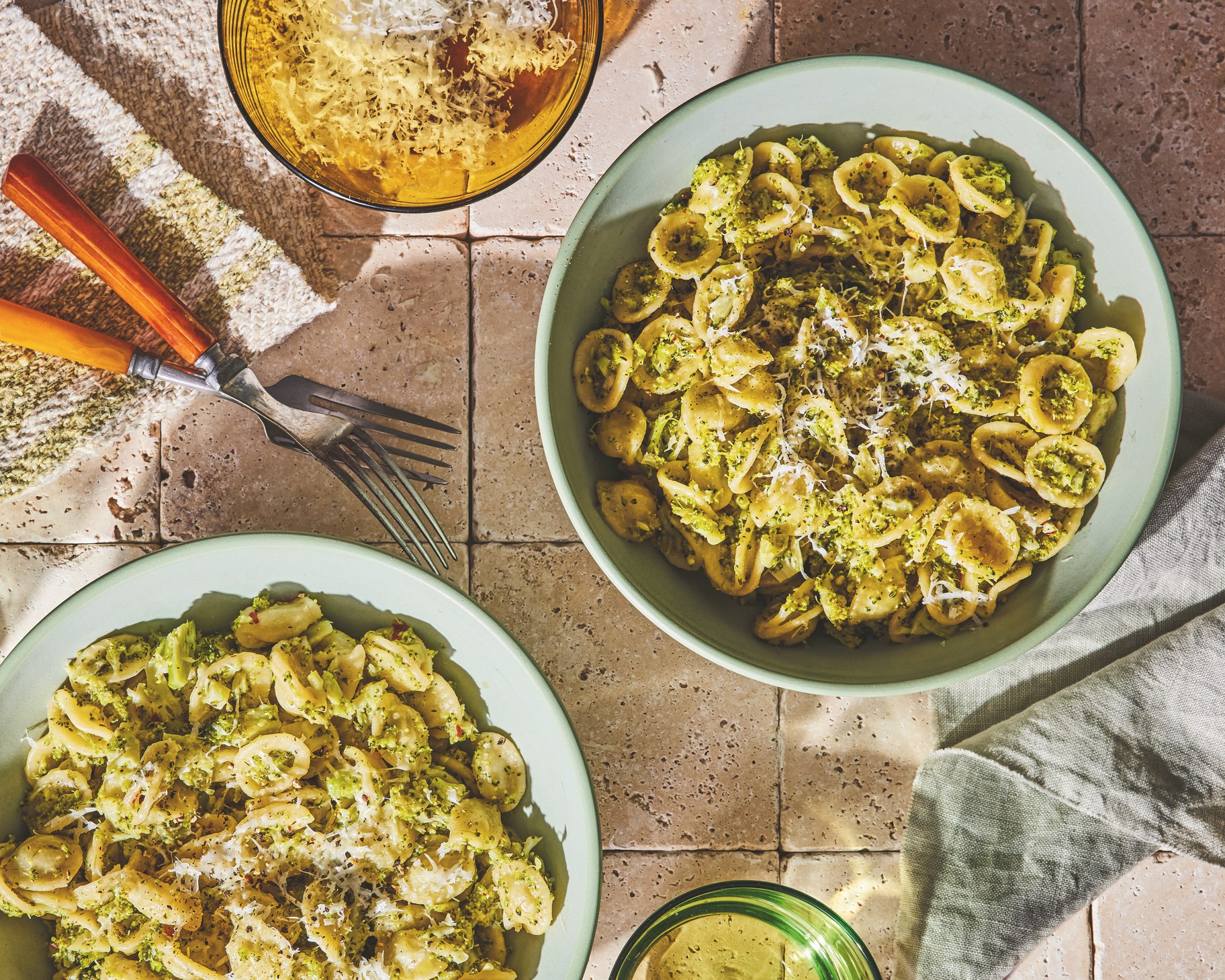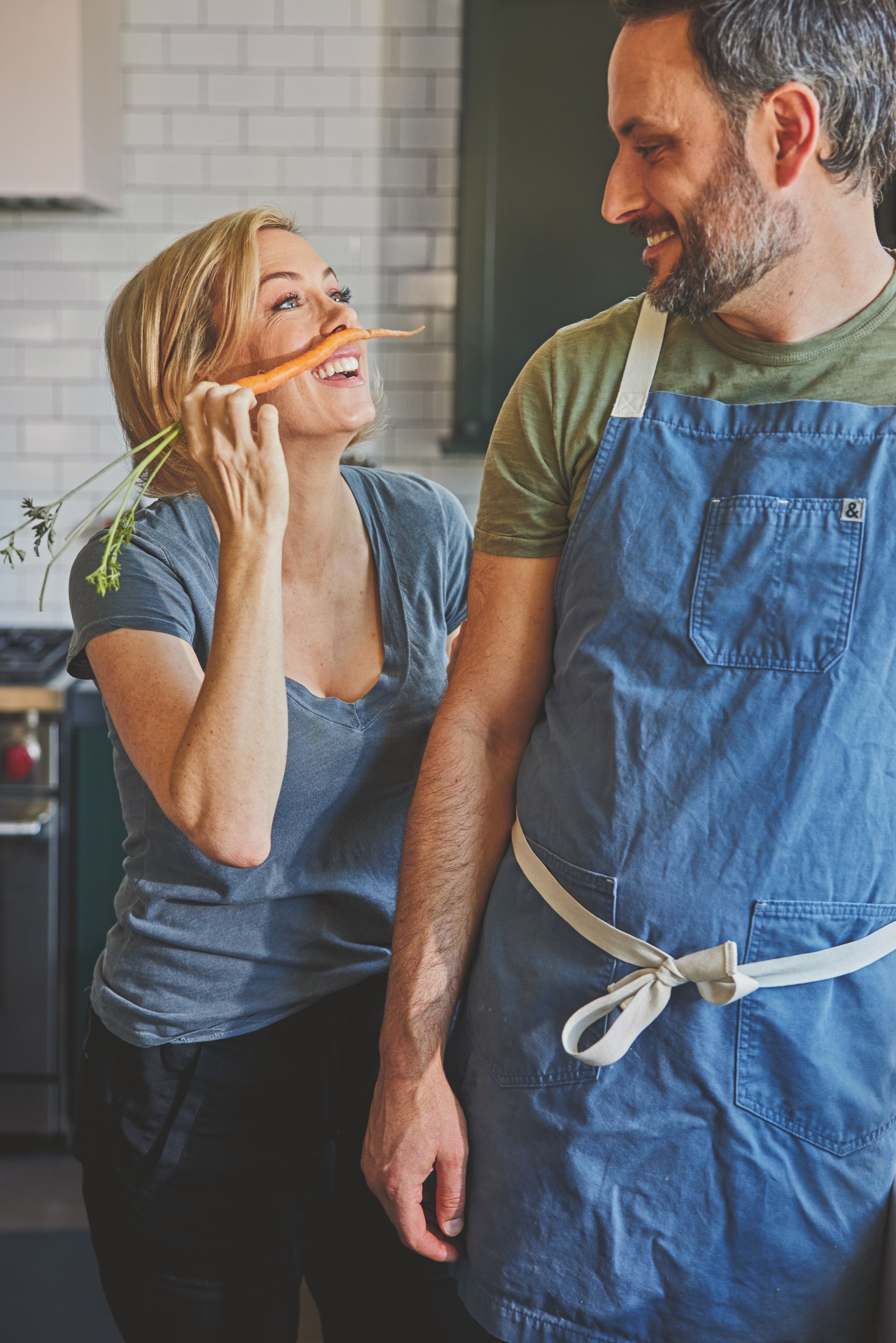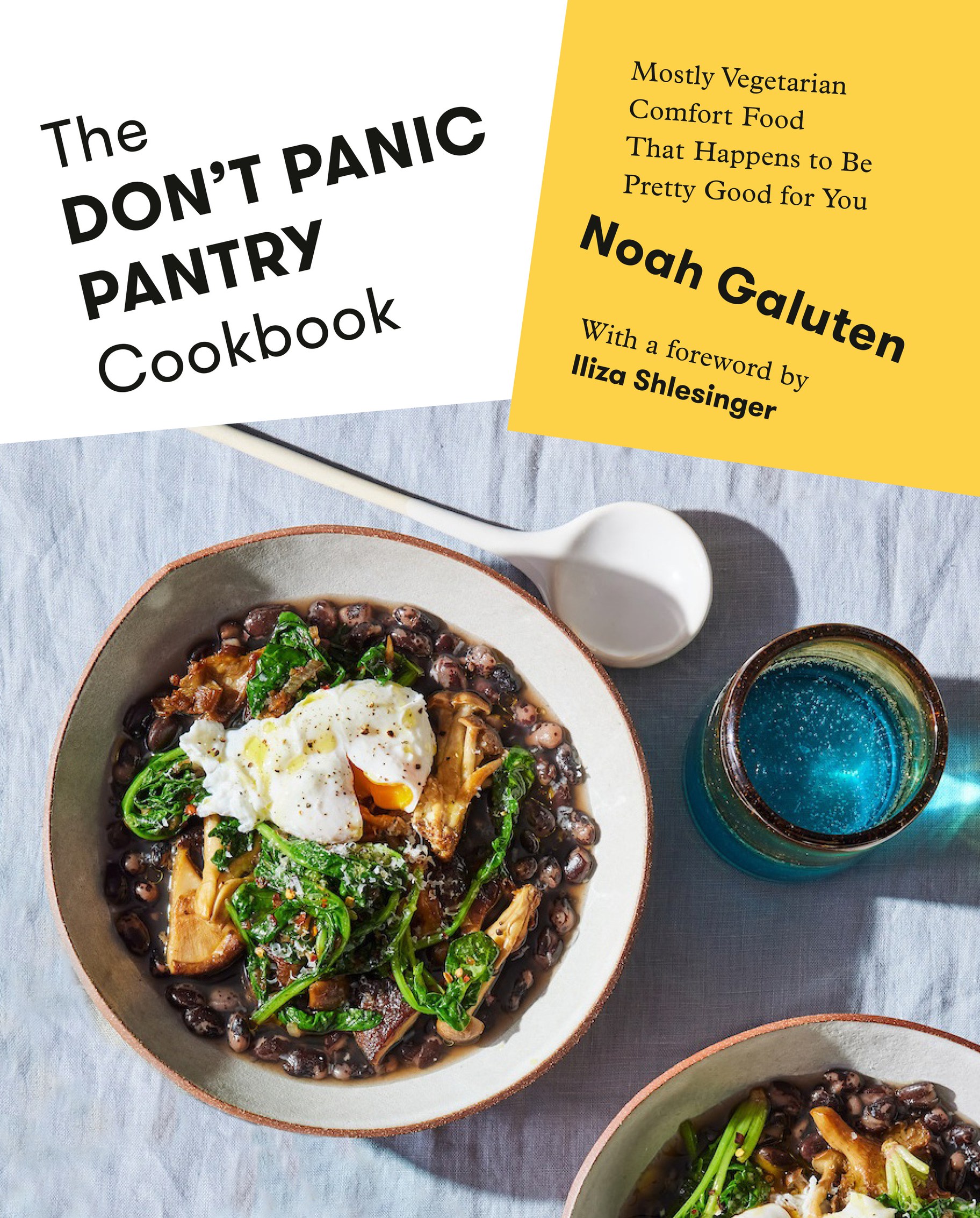Noah Galuten remembers his childhood pantry, filled with canned tomatoes, olive oil, garlic, and dried pasta. With exposure to more cuisines, his larder expanded to include soy sauce, tahini, lentils, beans, and gochugaru. But what does a person do with all of it? "I always hate when you buy a cookbook and you buy some crazy, exotic ingredient and it just sits in your pantry forever until it goes bad or next time you move and you finally throw it away," he says.
In "The Don't Panic Pantry Cookbook," Galuten offers recipes that include staple ingredients that home cooks will revisit.
They include a quick version of vongole using canned clams, a kitchari that his brother learned to cook while living in an intentional community near Gilroy, and broccoli pasta three ways.
Shantam’s Kitchari
Serves 2 or 3
Equipment: Sieve, saucepan or pot (at least 4-quart) with a lid, and a small skillet or saucepan
Kitchari is a rice and lentil porridge very popular in much of India, often given to babies as an early solid food. There is a lot of personal variation in the way that people make, eat, and even pronounce (or spell) kitchari— but it is often made with some form of lentils, rice, and ginger, and spiced with turmeric, cumin seeds, and black mustard seeds that have been fried and toasted in ghee.
I started eating it a lot after my brother first moved to a place called Mount Madonna, up in the Santa Cruz Mountains— an intentional community and education center. My brother went on to live there for fifteen years, becoming a pujari of their Hanuman temple. Kitchari is a staple food that my brother eats most days up there, and it has become a regular meal in my kitchen, too.
So below I present my brother’s version.
Once you make kitchari you can start to modify and experiment however you see fit. Sometimes I use brown rice instead of white, or whole mung beans instead of red lentils or split mung. Sometimes I will even take a handful of chopped greens like spinach and toss them into the pot at the very end before serving.
Kitchari can be reheated gently on the stove or in the microwave with just a little bit of water to help open it back up.
*Note- Asafoetida is a very common and distinctive spice in Indian cooking, though some people strongly dislike the smell on its own. I encourage you to try it and see how it enhances your dish. It is often said to aid in digestion, and has a uniquely savory and allium-like taste and aroma.
Ingredients
- ½ cup dal (lentils—ideally split yellow lentils or red lentils, known as toor dal or masoor dal, respectively)
- ½ cup basmati rice
- 2 tablespoons diced fresh ginger
- 2 tablespoons Ghee or a neutral oil, such as canola, vegetable, or grapeseed
- 2 teaspoons cumin seeds
- 2 teaspoons black mustard seeds (or any mustard seed you have on hand)
- Pinch of asafoetida (optional)
- 1 teaspoon ground turmeric
- 1 teaspoon ground cumin
- Pinch of ground cinnamon (optional)
- ¼ teaspoon kosher salt
Instructions
- Wash the lentils and rice—my preferred way is to pour them into a sieve and then set the sieve in a large bowl of water and agitate them by hand to release as much as starch as possible. Then lift the sieve up and repeat with a fresh bowl of water. It will usually require 2 or 3 changes of water until it is mostly clear. Drain well.
- Transfer the lentils and rice to a 4-quart or larger saucepan and add the ginger and 7 cups water. Bring to a boil, stirring occasionally. Reduce to a bare simmer, cover the pot, and cook until you end up with a soft and thoroughly cooked porridge that is not too dense or too watery. As it cooks, be careful of the starchy bubbles rising, escaping, and dribbling down the sides of the pot. Also keep an eye on the water level—lentils really like a lot of water to cook. If you find that the lentils and rice have absorbed most of the water but are not fully cooked, you should add more boiling water and give it a stir. The timing can vary quite a lot depending on the lentils—but 45 minutes is usually a pretty good rough guide. Overcooking is not a concern as long as there is enough water in the pot. Don’t worry if you have added too much water either—if the kitchari seems fully cooked but a bit loose, you can continue simmering until it has the consistency of a medium-thick porridge. Once the kitchari is cooked, remove from the heat and keep it covered.
- Meanwhile, in a small skillet or saucepan, heat the ghee over high heat. Add the cumin and mustard seeds. They will slowly begin to pop and fry—once they begin to pop with some frequency, add the asafoetida (if using). Once they have been popping for about 25 seconds, remove from the heat and add the turmeric, ground cumin, and cinnamon (if using), stirring the pan to combine the spices.
- Uncover the kitchari and pour the ghee and spices right into the pot—they will sputter and fry as they hit it. Add the salt and stir everything together. Serve immediately, topped with the adornments of your choice.
Ghee
Makes about 1½ cups
Equipment: Narrow heavy-bottomed saucepan, spoon or ladle, fine-mesh sieve, cheesecloth (optional), and 1-pint mason jar
Ghee is a very popular, delicious, and highly useful clarified butter that originated in India and is used all over the world. To make it, butter is cooked gently, and then the milk solids are separated out and removed. The result is a wonderfully aromatic fat that has a much higher smoke point— put simply: a higher temperature at which the fat will smoke and burn—making ghee perfect for frying and browning. Plus, removing all the milk solids means ghee is considered safe to consume if you are lactose intolerant, and also makes a product that will last for several months.
I prefer a light yellow, golden hue for my ghee, but some people prefer a nuttier, darker brown version— to achieve this, simply cook the ghee even longer. The key is to keep the temperature low so that you do not burn the milk solids and turn the whole thing bitter.
*Note- It takes about 45 minutes to 1 hour to make ghee, but it is a mostly inactive process. If you find that you use ghee a lot, I recommend doubling this recipe to save on time in the long run.
Ingredients
- 1 pound unsalted butter
Instructions
- In a narrow heavy- bottomed saucepan, melt the butter over medium-high heat. Once the butter has melted, reduce the heat to low or medium-low, depending on the strength of your stove. Keep the butter on low heat and do not stir it— simply use a spoon or ladle to gently remove any impurities that form at the surface and discard them. Continue cooking the ghee until it has turned quite translucent, 45 minutes to 1 hour.
- Continue cooking for a darker, nuttier ghee, or simply remove it from the heat and allow it to sit for about 10 minutes to allow the milk solids to settle to the bottom.
- Set a fine- mesh sieve or double layer of cheesecloth over the mouth of a mason jar and slowly pour in the ghee, leaving any solids that have separated in the bottom of the pan. Allow the ghee to come down to room temperature, then cover and transfer to the refrigerator, where it will harden. Store the ghee for up to 9 months under refrigeration, or at room temperature for up to 3 months.
Credit line: From The Don’t Panic Pantry Cookbook: Mostly Vegetarian Comfort Food That Happens to Be Pretty Good for You © 2023 by Noah Galuten. Excerpted by permission of Alfred A. Knopf, a division of Penguin Random House LLC. All rights reserved. No part of this excerpt may be reproduced or reprinted without permission in writing from the publisher.

"There is so much variation in what people like and don't like," says Noah Galuten, describing why he offers three versions of a broccoli pasta in his new collection of recipes. Photo by Kristin Teig.

Noah Galuten and his wife, comedian Iliza Shlesinger, inspire each other and clown around in the kitchen. Photo by Kristin Teig.

"The Don't Panic Pantry Cookbook" assembles recipes that suit a variety of palates with just a tweak of similar ingredients. Photo by Knopf.
